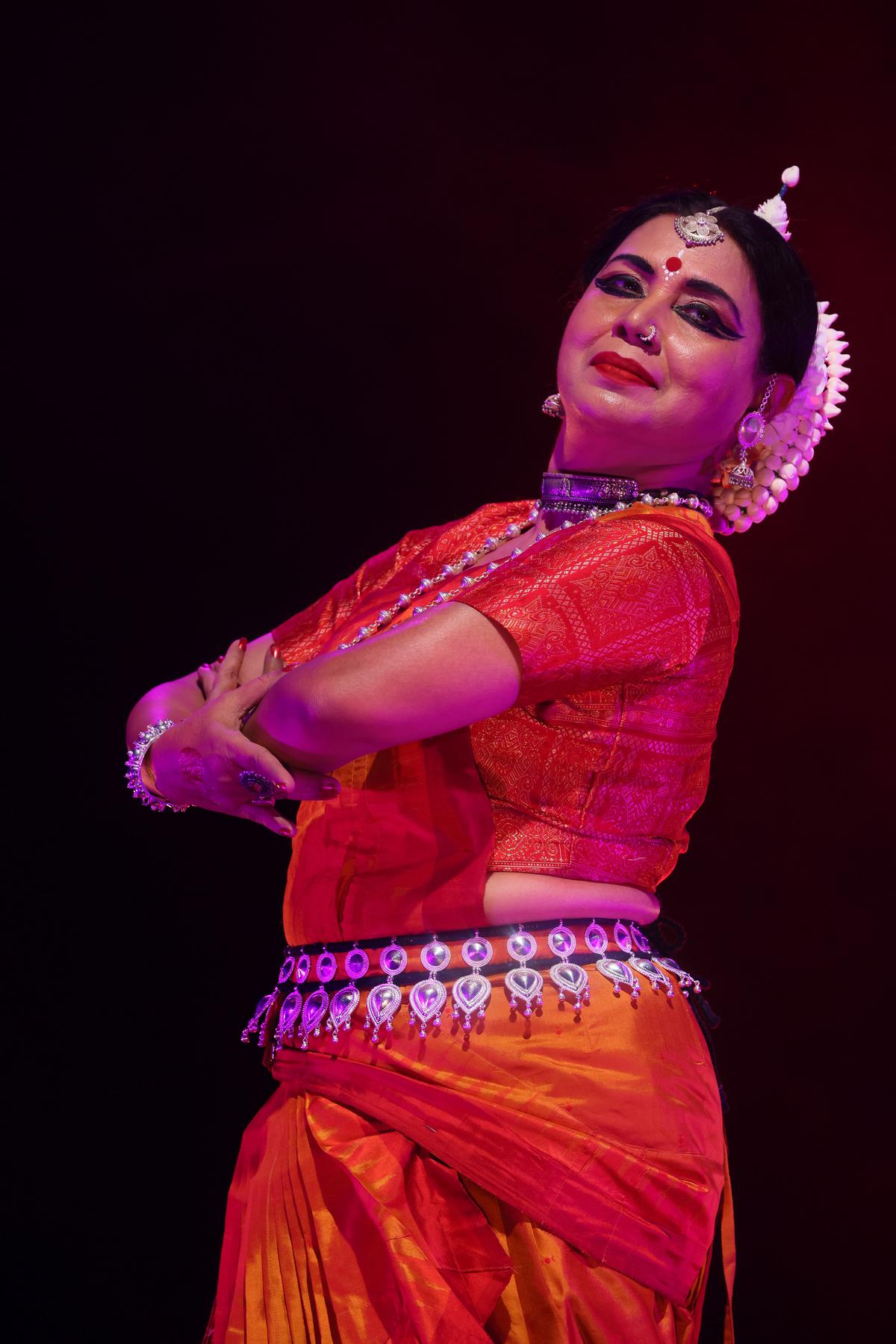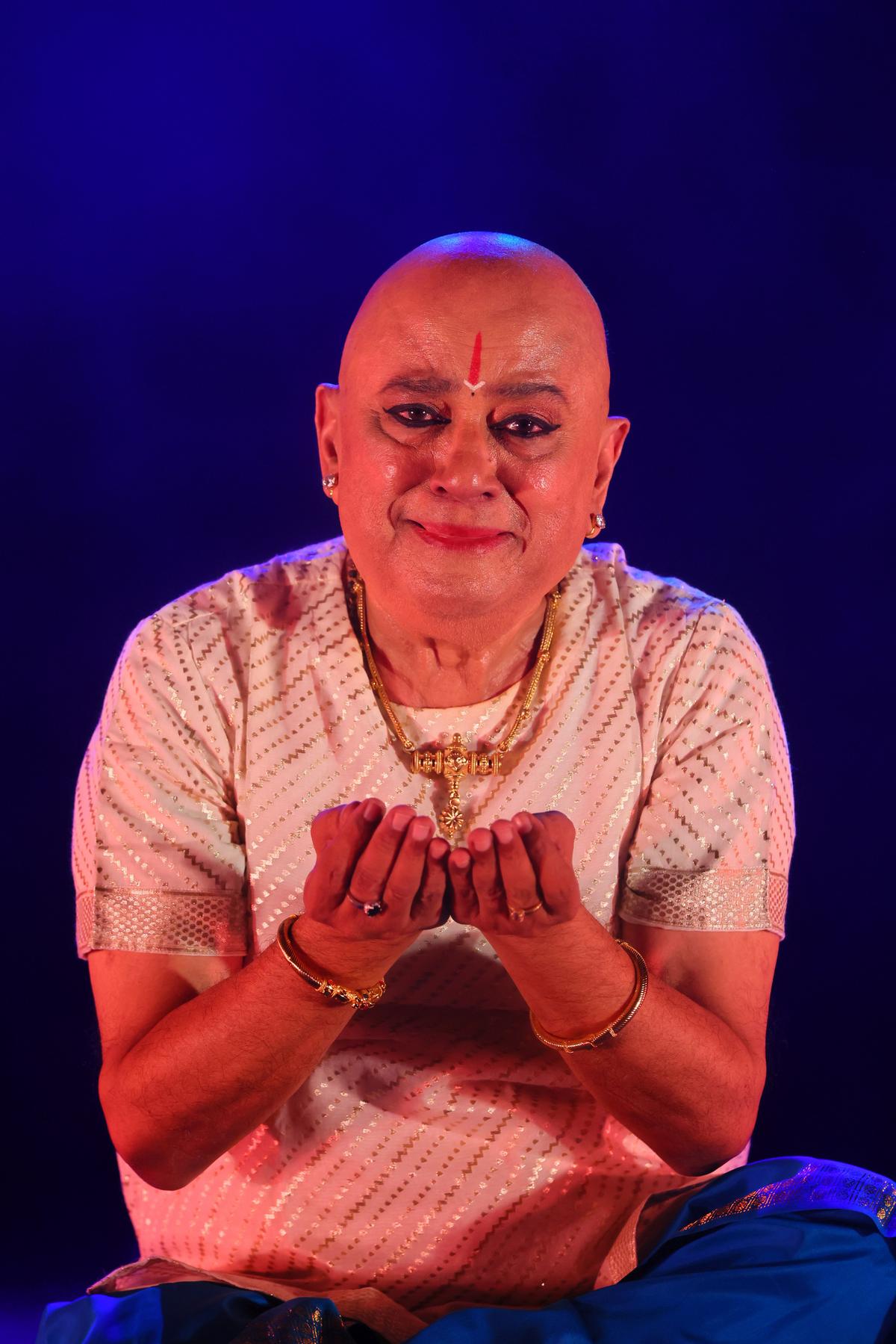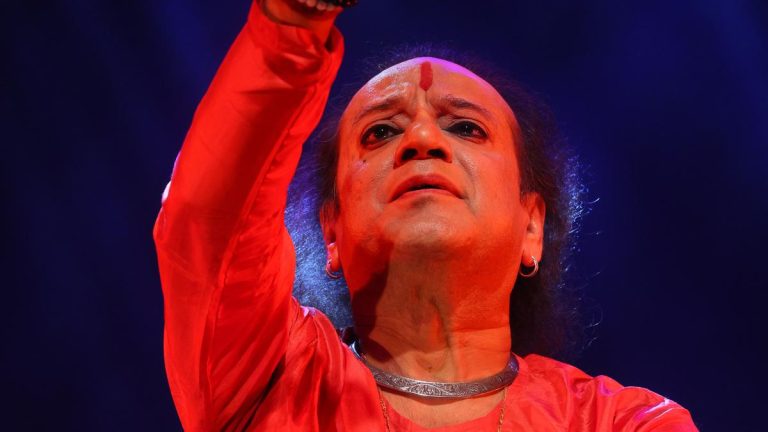
Kathak dancer Ashimbandhu Bhattacharjee’s performance highlighted the guru-sishya bond between Ramakrishna Pramahamsa and Swami Vivekananda.
| Photo Credit: Special Arrangement
Ashimbandhu Bhattacharjee (Kathak), Deepak Majumdar (Bharatanatyam) and Aruna Mohanty (Odissi), who performed at the festival, showed how poetry finds diverse interpretations in dance.
It was an evening meant to celebrate the contributions of three veteran dancers — Ashimbandhu Bhattacharjee (Kathak), Deepak Majumdar (Bharatanatyam) and Aruna Mohanty (Odissi), who performed for the Articulate Festival in Bengaluru.
Ode to the guru-sishya bond
The introductory number by Ashimbandhu was an ode to the guru-sishya bond shared by Ramakrishna Paramahamsa and Swami Vivekananda. He highlighted the relationship between man and god in the piece ‘Soyaham’, which was set to Dhamaar taal and raga Darbari.
In ‘Guldasta’, a bouquet of ghazals, Ashimbandhu highlighted the poetic expression using white, black and red fabrics, an urn filled with water and rose petals and a lantern, making for an engaging viewing.

Dynamic movements and nuanced expressions marked Aruna Mohanty’s Odissi performance at the Articulate Festival, held in Bengaluru.
| Photo Credit:
Special Arrangement
From the moment Aruna Mohanty appeared on stage striking a sculpturesque stance, framed by beams of light, her exploration was a combination of dynamic movements and nuanced expressions.
Based on a text from Shvethadhvatara Upanishad, the first composition ‘Shunya Swaroopa’ addressed the omnipotent presence of the supreme power that can only be felt and not seen through the formless Lord Jagannatha. She conveyed with great effect how he impacts every being.
Aesthetic presentation
That a villain is not an anti-hero, but a prototype of the nayaka was explored in the second piece ‘Pratinayaka’. Citing examples of Narasimha-Hiranyakashipu, Rama-Ravana and Krishna-Kamsa, Aruna emphasised on the philosophy ‘I am – therefore you are’, to highlight that every human being is a blend of good and evil. The melodious music, lighting design and choreographic patterns blended seamlessly in the aesthetic presentation.

Deepak Majumdar’s Bharatanatyam performance was an ode to bhakti through the works of Surdas and Tulsidas.
| Photo Credit:
Special Arrangement
Deepak Majumdar’s ‘Sur ke Shyam – Tulsi ke Ram,’ was an ode to bhakti through the poetry of Surdas and Tulsidas.
The next piece, ‘He Govinda He Gopala’ spoke about giving up on materialistic life to understand the presence of the Supreme. Using the analogy of elephant as a personification of ego to be detached from the crocodile representing desire, Deepak delineated Gajendra Moksham.
Then came ‘Char Pahar’, which referred not just to a time cycle but to the four stages of man. Equally fascinating was Deepak’s focus on the feet in the bhajan ‘Ram charan sukhdayi’ to depict the feeling of surrender.
It was heartening to watch a performance that moved at a leisurely pace to unravel the essence of each composition.
Published – April 17, 2025 05:47 pm IST

